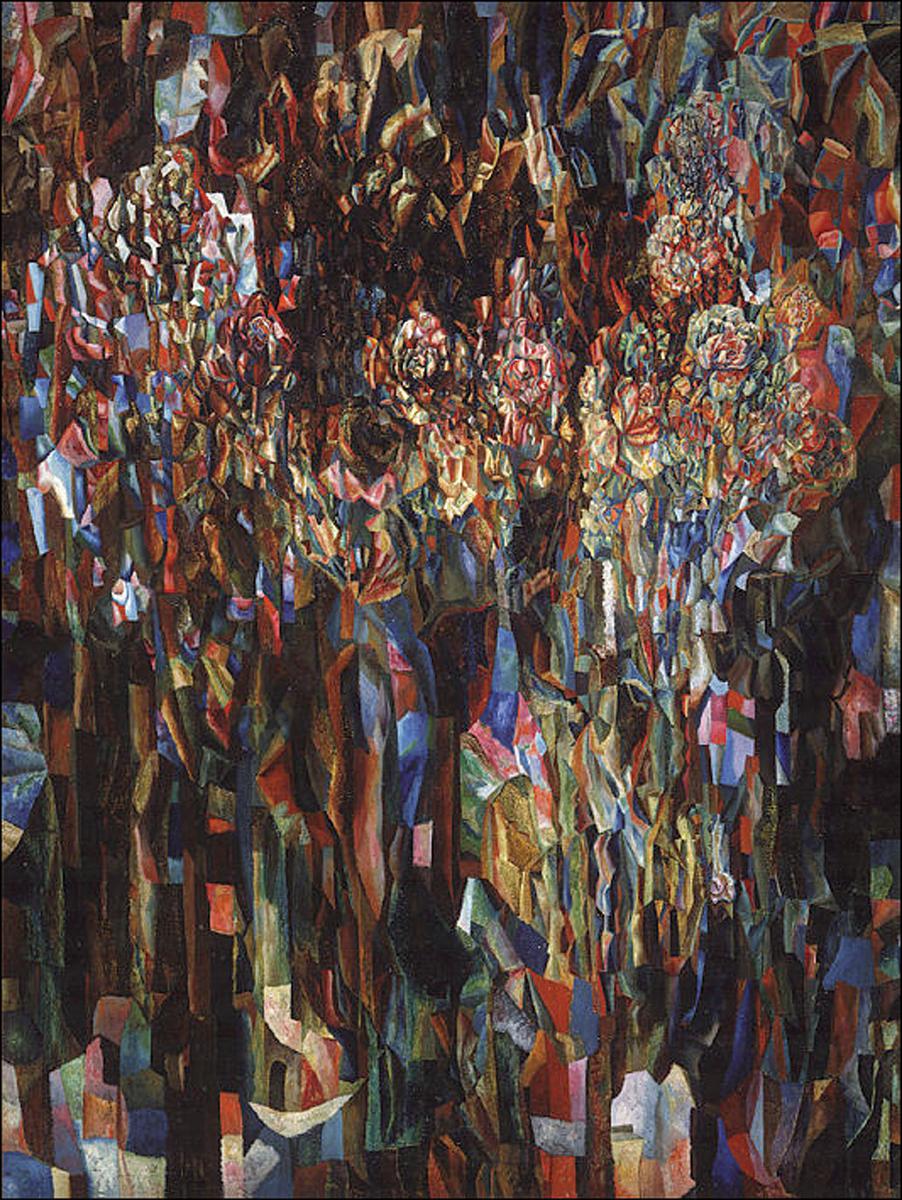
What happens in your mind when you see a painting?
In most general terms, a change in your inner state. I wanted to write “state of mind” at first, but this sounds too restrictive: “mind” is often opposed to “body”, “heart”, “soul”. So I’ll just go with “inner state”, meaning the whole inner space of “eye-mind-heart-body” system which is you. The painting’s effect on your inner state can be as fleeting and superficial — or as profound and transformative — as you allow it to be.
When looking at a painting, it’s incredibly easy to fall in one of two traps, either of which renders the whole experience superficial and ultimately meaningless. The first is “professional”, or technical — you know you are in danger of this trap if you start talking to yourself (or someone else) about colour areas, composition, and such, about the painting’s place in art history, and especially if you start thinking about whether the painting is well done. The second is perhaps even more common, especially if the painting is representational: you focus on what is depicted, on whether it looks “real”, on how much details there are, or on what the artist “wanted to say”. Your self-talk is about whether you like it or not, and whether you’d want something like this hanging in your living room.
But there is a third way, which is close to the method developed by Johann Wolfgang Goethe for his scientific studies; he called it contemplative observation. Here is how Gottfried Richter, who used in for his inquiry into art history, “Art and Human Consciousness”, describes it:
… it consists of a continual striving not to think “about” the phenomenon as such, but rather from within them, or out of them.
The first thing to realise in order to achieve this mode of seeing is that what you are seeing is created for you by your own brain, based on its accumulated knowledge and patterns of image recognition. The painting you are seeing and the painting someone right next to you is seeing — they are never quite the same painting. Your response is not determined by the painting alone, but also by who you are and where you are in your life right now.
The practice of contemplative observation opens a connection between your inner state, your consciousness, and the innermost core of the painting. In a sense, you become — for a time — the subjective consciousness of the painting. Your inner response is the mirror of the painting, and the painting you see is the mirror of your inner response. The key to contemplative observation is to witness this response in its interaction with the painting.
What I am going to suggest now might seem very simple, but it can also be very hard: just spend fifteen-twenty minutes (or more — the more the better) looking at the painting closely and witnessing all the images, memories, bodily sensations, emotions, gestures, metaphors floating to your consciousness in response to it. Pay attention to how your mood, and your inner state, changes in response to the painting — and to how the painting itself changes in the process of contemplative observation. The image in the mirror is fluid, not static: connect with its flow, witness all its nuances in their dynamics. It may also be helpful to imagine that you have a “knob” which you can turn to amplify your inner state. Turn this knob, and notice your sensations — how your posture changes, the sensations of warmth or cold, the feelings of joy and sorrow.
One mental technique I find very useful in connecting my inner state to a painting is to try and synchronise my breath with it. It may sound strange — because, after all, paintings don’t breath, but if you don’t think about it, but just try to do it, you may be surprised. It works particularly well when looking at a painting in person: the painting seemingly comes alive and begins to move under your very eyes. There is nothing esoteric here — while breathing, we move slightly, and the angle at which we see the painting changes, hence the impression of movement. This effect is harder to achieve when looking at a reproduction on the computer screen, because it is usually much smaller, but it is still possible.
A word of caution is in order. Even if you love the painting you are looking at immensely, you may encounter some resistance in going into this process (at least that what happens to me sometimes). I believe it’s partly because our “self” doesn’t like to “shift gears”, and such a pause in the hectic wheel of life is quite a shift for a modern person. And partly because this process involves an aspect of self-transcendence, detachment from self (not unlike a meditation), and the “self” doesn’t like that, either… If you encounter this sensation of resistance, just go through it, let it go, and stay with the painting. After all, it’s just a sensation.
Your response to a painting can be very personal, revealing, and, occasionally, transformative. You certainly don’t have to share it with anyone, it is just for you — but it may be helpful to journal about it to make sense of this experience.
This essay is a part of an online learning program, The Making of a Painting Masterpiece.
[…] itself in my mind. When I colour-chart my response to a master painting, I try and go back to the inner state achieved in the process of contemplative observation (but without looking at the painting itself, so I can focus on my response, rather the painting’s […]